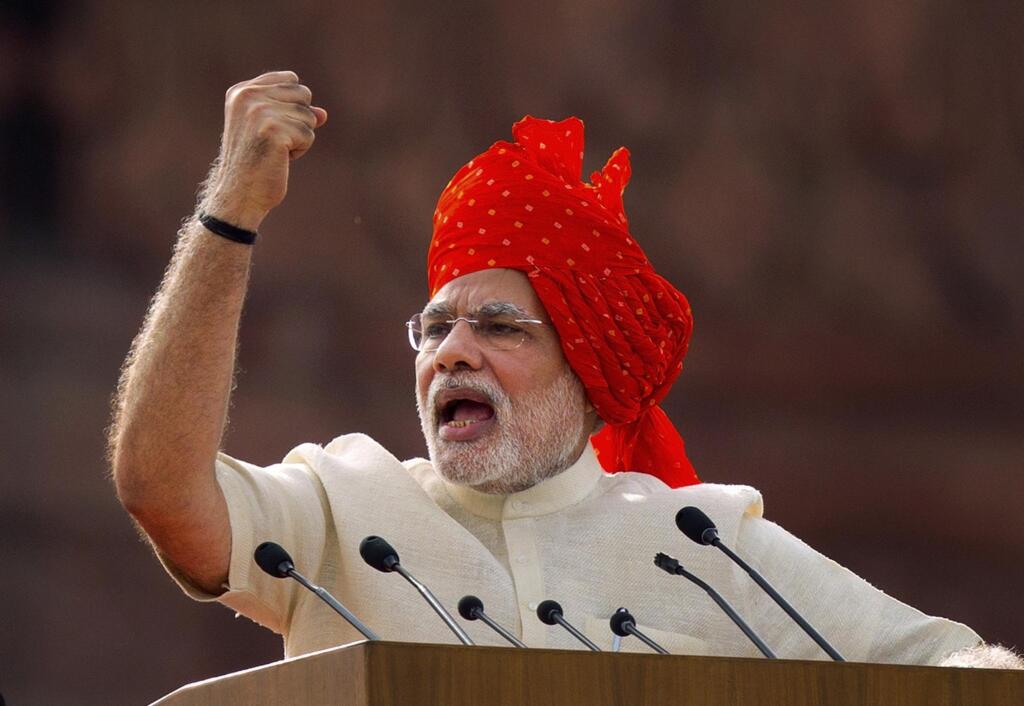The Modi government’s reforms, fiscal discipline, and focus on supply-side factors have led to exemplary inflation control.
Inflation’s Role in Indian Politics
Inflation is a significant political-economic variable, particularly in democracies. Historically, uncontrolled inflation has sparked revolutions worldwide. The Indian political scene is familiar with this phenomenon.
Widespread discontent against UPA 2 was largely due to rampant inflation, which peaked at 12 percent. Recently, opposition leaders like Rahul Gandhi have tried to use ‘mehngai’ as a narrative against Modi’s government. However, despite their efforts, inflation has not become a prominent election issue in 2019 or 2024.
What the Data Shows
If inflation had been a significant issue, rallying people around it would not have been difficult. The absence of inflation as a focal point in election narratives suggests that people aren’t feeling its impact as intensely as before. Data supports this view.
India followed the WPI-based Inflation Index until 2012, then switched to CPI. CPI inflation data before 1961 is unavailable, so both indices are considered for comprehensive analysis. The data reveals that PM Modi has the best inflation record among all Indian Prime Ministers since independence.
Modi’s Record on Inflation
During Modi’s tenure, average CPI inflation has been 5.03 percent, aligning with the RBI’s target of 4 to 6 percent. WPI inflation is even lower at 3.1 percent. This is a significant improvement from PM Singh’s tenure, which saw 8.27 percent CPI inflation, exceeding RBI targets. Few Prime Ministers have kept CPI inflation below 6 percent, and Modi has excelled in this area.
Government’s Impact on Inflation
Examining inflation trends since 1981 shows the significant impact of government policies and leadership on inflation rates. When Modi took office in May 2014, the inflation rate was around 8 percent. By December, it had dropped to 4 percent, illustrating the government’s influence on inflation.
The US experience since 2008 underscores the limited role of central banks in controlling inflation compared to government actions. Despite 0 percent rates for over a decade, inflation remained minimal until government fiscal actions during the pandemic caused a surge. The US Central Bank’s struggle to control inflation further highlights the limited control of central banks. Fiscal and government actions have a more significant impact on inflation.
Comparing Indian and Global Inflation Rates
Comparing Indian inflation rates with global numbers highlights Modi’s superior inflation control. During his tenure, the average inflation rate was 2.39 percent higher than in the US. This is less than half compared to Singh’s era, which was 5.58 percent higher than the US, and significantly lower than Rao’s era, which was 7.17 percent higher.
Since 1991, Modi’s era has had the lowest inflation markup compared to global numbers. There was even a period during his regime when Indian inflation was lower than in developed economies—some countries had rates of about 8 percent, while India was at approximately 6 percent.
How Modi Controlled Inflation
India has struggled with chronic inflation for years, but Modi’s regime has seen a notable change. This structural shift in inflation levels is a significant achievement given India’s history of high inflation.
Several structural reforms have helped the Indian economy overcome chronic inflation. Previously, an inefficient supply chain contributed to inflation by delaying goods and increasing costs. GST reforms eliminated multi-day stops at state borders, reducing time and supply chain costs through lower fuel expenses.
Lower fuel costs reduced the economy’s oil intensity, mitigating the impact of oil prices on inflation. Despite high oil prices, inflation in India has not surged as much as in the past.
Digital reforms minimized corruption leakages, particularly in the Direct Benefit Program, reducing inflation caused by increased consumption from graft money recipients. Modi’s direct benefit programs are primarily in-kind, such as the Awas Yojana and Toilet Scheme, which helps reduce inflation’s impact.
Balancing Fiscal Discipline and Economic Growth
Modi’s policies balance direct benefits to the poor with support for industrial growth through schemes like corporate tax cuts and PLIs. His fiscal discipline, especially during the pandemic, contrasts with the lenient fiscal policies of other countries. This discipline has helped control inflation post-pandemic.
Conclusion
Modi’s exemplary inflation management offers valuable lessons for policymakers and central bankers in developing countries. It debunks oversimplified notions about limited government control over inflation outcomes. As India approaches current elections, it is crucial to remember the importance of prudent economic governance in maintaining low inflation and fostering growth and prosperity. Modi’s tenure exemplifies this approach, setting India on a path toward greater growth and stability.
ALSO READ: Basic Needs, Confidence & Now, The Third Term… What is PM Modi’s Vision for India?
